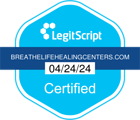Brad Lamm, CIP
Binge Eating Disorder, or BED, is characterized by different eating behaviors that impact the body in the same way as other addictions. Specific repeat behavior includes eating large amounts of food when not physically hungry, eating until uncomfortably full, eating alone due to embarrassment by how much is being consumed and feeling disgusted, depressed or very guilty after overeating.
Given that BED was only formally recognized as a disorder in 2013, much is still unknown about the physical and psychological recovery from this disease. However, Denise E. Wilfey of Washington University School of Medicine in St. Louis, has authored a new study in the treatment of people suffering from BED.
In preliminary trials, the drug known as Vyvanse, which has been traditionally used to treat Attention Deficit Disorder, was found by Wilfey to work for binge eaters by acting on the dopamine and norepinephrine systems in the brain, which are two pathways that help control rewards and control. When people took the drug every day for 11 weeks, half of them stopped binge eating entirely. Half. That’s an incredible statistic although I admit I am highly suspect of big pharma and the solutions they generally push in a pill.
The world gets bigger every day as weights rise, and our bodies struggle under the weight of it all. Two of the most significant tools in battling eating disorders come equipped as standard on most of us. Smart feet get us moving and into spots that support our change. A mouth active in listening, or drinking a glass of water, or from a thoughtful food plan will advocate for your wellness and recovery. The solution is deeper than a diet, not corrected by a pill alone and isn’t all about the food.
Because of BED’s complexity and pervasive consequences, treatment must involve many components. Breathe treats BED by looking into the emotional and historical motivators that might be causing the behavior. Programming like cognitive and dialectal behavior therapy, nutrition counseling, equine therapy, guided meditation, art therapy, and exercise addresses the disease through multiple avenues, all of which are crucial elements to any drug therapy.
For some, this new discovery may work to help get started on the road to recovery. But it will take much more than that to keep them walking.













